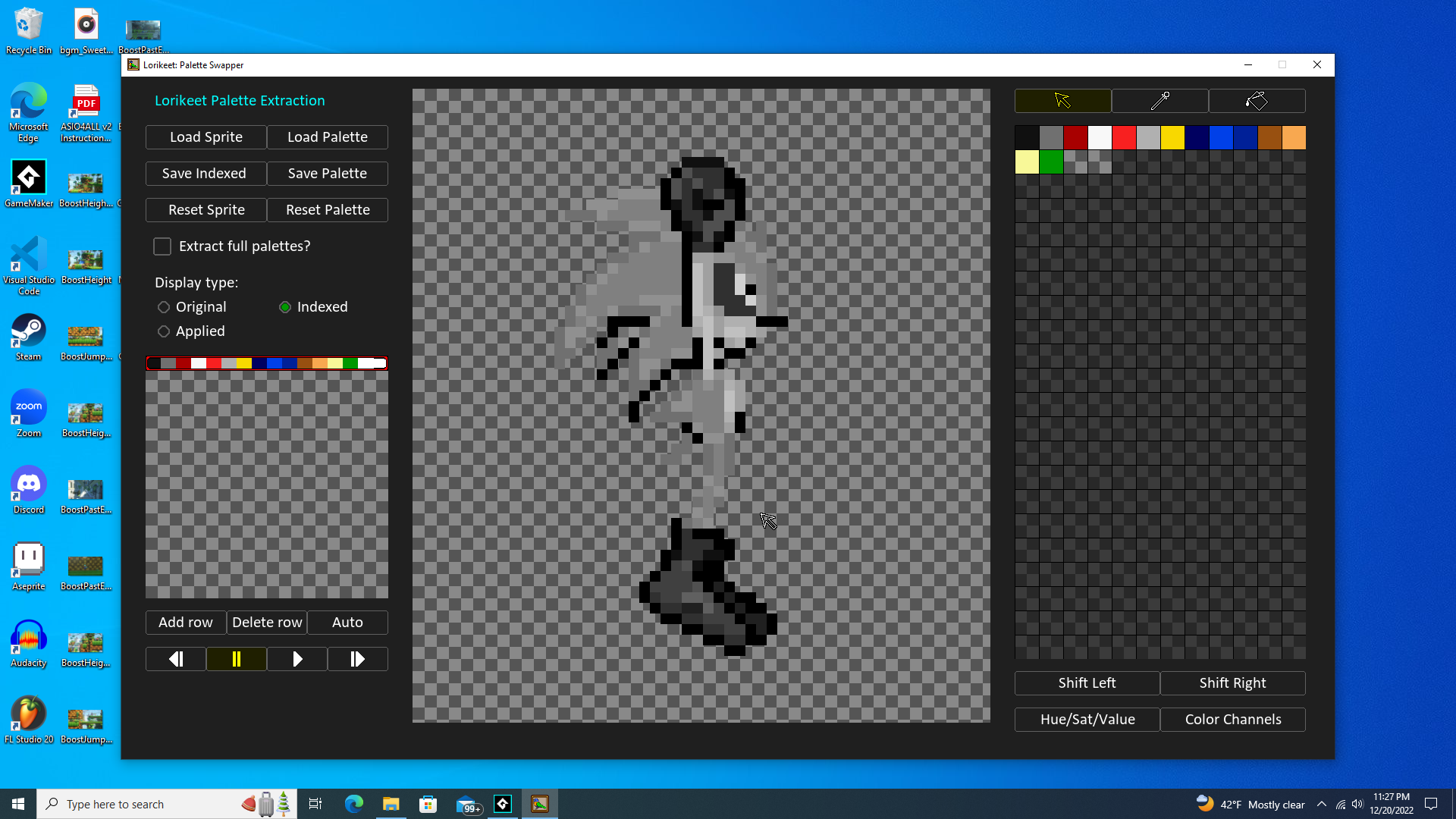Getting the palette of a sprite at runtime isn’t something Lorikeet does (nor do I have any interest in doing so), though if you really want to do that there’s this one that Jon made. The color index is stored in the grayscale value. Look into how old video game consoles stored sprite color before the days of RGBA.
If you want to apply an additional effect after the palette lookup, modify the final gl_FragColor value.





